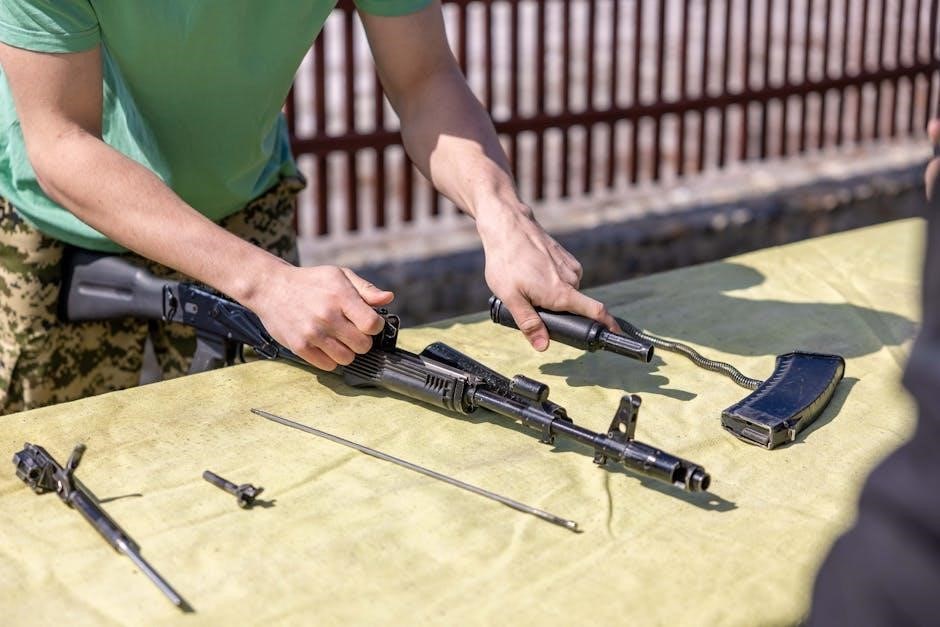Dodge Challenger Differential Sizes⁚ A Comprehensive Guide
This guide explores the various differential sizes found in Dodge Challenger models, focusing on manual transmissions. We’ll examine common gear ratios, dimensions, and compatibility issues, offering practical tips for identification and potential upgrades. Understanding your Challenger’s differential is crucial for performance and maintenance.
The differential, a critical component in the rear axle assembly of your Dodge Challenger, plays a vital role in power distribution to the rear wheels. Its primary function is to allow the wheels to rotate at different speeds during turns, preventing tire slippage and ensuring smooth handling. Understanding your Challenger’s differential is crucial for several reasons. First, the gear ratio within the differential significantly impacts acceleration, top speed, and fuel efficiency. A lower gear ratio provides quicker acceleration but lower top speed, while a higher gear ratio offers better fuel economy at the cost of acceleration.
Second, the differential’s size and type (open or limited-slip) directly affect traction and performance. Open differentials, common in many Challengers, send power to the wheel with the least resistance, potentially leading to wheelspin in challenging conditions. Limited-slip differentials, on the other hand, distribute power more evenly, improving traction and handling. Finally, proper differential maintenance, including fluid changes, is essential for preventing costly repairs and ensuring the longevity of your vehicle’s drivetrain. Neglecting differential maintenance can lead to premature wear and tear, potentially resulting in costly repairs or even catastrophic failure.
Gear Ratios in Different Challenger Models⁚ A Detailed Overview
Dodge Challenger models, particularly those with manual transmissions, offer a range of differential gear ratios, each impacting performance characteristics. The most common ratios found in manual transmission Challengers include 3.73, 3.90, and, less frequently, 3.55. The choice of gear ratio often depends on the engine size and intended use of the vehicle. Higher numerical ratios (e.g., 3.90) provide quicker acceleration and increased torque at lower speeds, making them popular for performance-oriented driving. However, this comes at the expense of higher engine RPMs at highway speeds and potentially reduced fuel economy.
Lower numerical ratios (e.g., 3.55 or 3.73) prioritize higher top speeds and better fuel efficiency on the open road. These ratios are often preferred by drivers who prioritize highway cruising comfort and fuel economy. The specific gear ratio used in a particular Challenger model year and trim level can vary, so it’s important to consult the vehicle’s specifications or documentation to determine the exact ratio. Factors like wheel size can also influence the effective gear ratio, further impacting performance. Understanding these nuances is crucial for making informed decisions about upgrades or modifications to your Challenger’s drivetrain.
Manual Transmission Challengers⁚ Common Differential Ratios
Dodge Challengers equipped with manual transmissions typically feature a selection of rear differential gear ratios, each tailored to different performance goals. The most prevalent ratios encountered are 3.73 and 3.90. A 3.73 ratio provides a balance between acceleration and highway cruising, offering a blend of responsiveness in city driving and reasonable fuel economy at higher speeds. This ratio is often found in models prioritizing a versatile driving experience.
Conversely, the 3.90 ratio prioritizes aggressive acceleration and torque at lower RPMs. This makes it an ideal choice for drivers who frequently engage in spirited driving or track use. The trade-off, however, is a higher engine RPM at highway speeds, which can negatively impact fuel efficiency. Occasionally, you might find a Challenger with a 3.55 ratio, which emphasizes high-speed cruising and fuel economy over raw acceleration. The specific ratio used varies based on the model year, trim level, and optional packages specified at the time of purchase. Checking the vehicle’s documentation or using the VIN to access the original build sheet will provide confirmation of the installed ratio.
Automatic Transmission Challengers⁚ Common Differential Ratios
Dodge Challengers with automatic transmissions present a different landscape of rear differential gear ratios compared to their manual counterparts. The most commonly found ratio in automatic Challenger models is 3.09. This ratio is often paired with the 5-speed automatic transmission and is designed to balance acceleration with fuel efficiency. It offers a more relaxed driving experience compared to the lower ratios found in manual transmission Challengers. The emphasis is placed on smooth power delivery and comfortable highway cruising, making it a suitable choice for daily driving.
While 3.09 is prevalent, some automatic Challengers, particularly those equipped with performance packages, may feature a 3.06 ratio. This minor reduction in numerical ratio offers a slightly higher top speed and improved fuel economy at the expense of slightly reduced low-end torque. It’s important to note that the availability of these ratios varies by model year and trim level. Some higher-performance models may deviate from these standard ratios, utilizing alternative gear ratios optimized for specific performance characteristics. Always refer to your owner’s manual or the vehicle’s specifications to confirm the precise ratio installed in your specific Challenger.
Identifying Your Challenger’s Differential⁚ Practical Tips
Pinpointing your Dodge Challenger’s differential specifics requires a multi-pronged approach. First, consult your vehicle’s documentation. The owner’s manual or window sticker may list the rear axle ratio, a crucial piece of information. This ratio, often expressed as a number like 3.09 or 3.92, indicates the gear reduction within the differential. However, documentation isn’t always readily available or might be incomplete.
A visual inspection of the differential itself is another option. Look for a tag or marking cast into the differential housing; this may contain a part number that can be cross-referenced. Alternatively, you can consult online resources or forums specializing in Dodge Challengers. Providing details such as your model year, trim level, and engine type will help others identify the likely differential specifications. Remember that the physical size of the differential housing can vary slightly based on model year and other factors, so relying solely on visual size comparison might not be entirely reliable.
Finally, if you have access to a vehicle identification number (VIN), you can utilize online VIN decoders to retrieve the original factory specifications, including details about your differential. Combining these methods will increase your chances of accurately identifying your Challenger’s differential.
Differential Size Specifications⁚ Dimensions and Compatibility
Dodge Challenger differentials, particularly those paired with manual transmissions, come in various sizes, primarily differentiated by their gear ratios and associated physical dimensions. While the housing’s external dimensions might appear similar across different models and years, internal components like ring and pinion gears vary significantly. A 3.90 ratio differential, commonly found in manual transmission Challengers, will differ internally from a 3.09 ratio unit typically used in automatic versions. These internal differences are critical for compatibility.
Directly swapping differentials between models requires careful consideration. Simply matching the gear ratio is insufficient; the physical dimensions of the differential carrier and axle shafts must also be compatible with your vehicle’s chassis. Using an incorrect differential might lead to clearance issues, axle misalignment, or even catastrophic failure. Before attempting a differential swap, it is advisable to consult service manuals or expert mechanics to ensure compatibility; Improper installation can damage components, leading to costly repairs.
Furthermore, the presence of a limited-slip differential (LSD) versus an open differential also impacts compatibility and requires attention during any swap. An LSD requires specific modifications and often a corresponding axle setup, unlike a standard open differential. Therefore, thorough research is crucial to avoid costly mistakes. This detailed understanding is key to a successful and safe upgrade.
Upgrading Your Differential⁚ Considerations and Options
Upgrading your Dodge Challenger’s differential offers potential performance enhancements, but careful planning is crucial. The decision hinges on your intended use⁚ drag racing, road course driving, or daily street use. Drag racers often favor lockers for maximum traction off the line, while road course enthusiasts might prefer limited-slip differentials (LSDs) for balanced handling. Street drivers should prioritize durability and reliability.
When considering an upgrade, gear ratio is a primary factor. A lower numerical ratio (e.g., 3.90) provides quicker acceleration but reduces top speed and fuel economy. A higher ratio (e.g., 3.09) favors higher speeds but sacrifices low-end torque. The ideal choice depends on your driving style and preferences. Beyond gear ratio, the choice between an open differential, an LSD, or a locker significantly affects performance and handling characteristics. An LSD offers improved traction compared to an open differential, while lockers provide the most aggressive traction control, but can impact drivability.
Before undertaking any upgrade, thoroughly research compatibility with your specific Challenger model and transmission. Professional installation is often recommended to avoid potential damage from improper setup. Remember, a poorly executed upgrade can result in costly repairs or even unsafe driving conditions. Consult with experienced mechanics or performance shops for guidance on choosing the appropriate components and ensuring correct installation.
Troubleshooting Differential Issues⁚ Common Problems and Solutions
Identifying and addressing differential problems in your Dodge Challenger is crucial for maintaining performance and safety. One common issue is unusual noises, such as whining, humming, or clicking sounds, often indicating worn bearings, gears, or a failing limited-slip differential. These noises may vary with speed or load, providing clues to the source of the problem. Another potential issue is excessive vibration, especially under acceleration or deceleration, which could be caused by worn components, misalignment, or damaged axles.
Fluid leaks are another significant warning sign. Check for leaks around the differential housing, axle seals, and drain plug. Low differential fluid level can lead to overheating and premature wear. Inspect the fluid itself; discoloration, metallic particles, or a burnt odor suggest internal damage. If you notice any of these issues, immediate attention is necessary to prevent further damage. Ignoring these problems can lead to catastrophic failure, potentially resulting in loss of control.
Diagnosing the exact cause requires professional inspection. A qualified mechanic can assess the differential, identify the specific problem, and recommend appropriate repairs or replacement. Regular maintenance, including timely fluid changes using the correct type and weight of gear oil, is critical for preventing many common differential problems. Following the manufacturer’s recommended maintenance schedule will significantly extend the lifespan of your Challenger’s differential and help avoid costly repairs.
The Future of the Challenger⁚ Implications for Differential Availability
With the discontinuation of the Dodge Challenger in 2024, the long-term availability of parts, including differentials, becomes a significant concern for owners. While some parts may remain available through dealerships and salvage yards for a period, the supply is expected to dwindle over time. This scarcity will likely impact the cost of replacement differentials, potentially making repairs increasingly expensive. Furthermore, finding specific gear ratios and limited-slip differentials may become more challenging.
The shift towards electric vehicles within the Stellantis group also influences the future of parts availability. As production of internal combustion engine vehicles decreases, the demand for replacement parts might decrease as well, leading to a reduction in manufacturing and distribution. This could eventually result in many parts becoming obsolete, leaving owners with limited repair options. Consequently, proactive maintenance and careful storage of spare parts become crucial strategies for preserving the longevity of your Challenger.
For enthusiasts, this presents an opportunity to acquire and stockpile rare or desirable parts now before they become truly scarce. The collector car market often sees a price increase for parts associated with discontinued models, so securing necessary components early could prove beneficial in the long run. Additionally, building relationships with specialized mechanics who have experience with the Challenger’s drivetrain might be advantageous in the event of future repairs.

